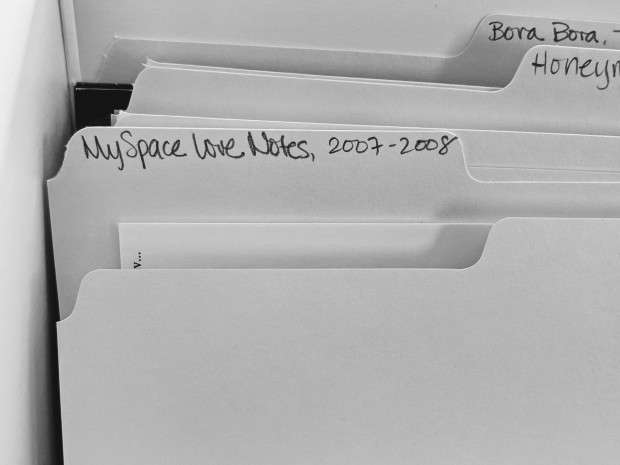Responses & Retrospectives: Rachael Woody on Myspace and the Precarity of User Content on Social Media Platforms
Apr 30, 2021Responses & Retrospectives: Rachael Woody on Myspace and the Precarity of User Content on Social Media Platforms

Rachael Woody
This is the latest post in our series Responses and Retrospectives, which features archivists’ personal responses and perspectives concerning current or historical events/subjects with significant implications for the archives profession. Interested in contributing to Responses and Retrospectives? Please email the editor at [email protected] with your ideas!
On March 18, 2019 the world learned that Myspace lost millions of songs, photographs, and videos posted prior to 2016. Myspace reports that the loss of data occurred due to a server migration project gone wrong. Such a loss of digital content received mixed reactions as some were horrified and others relieved that their Myspace content was lost. Once a major social media platform from 2003-2008, Myspace has since declined in usership with the rise of Facebook as the predominant social platform. Now, in 2019, Myspace is mostly used for musicians to share work and connect with fans.
It Can Happen to You
What happened to Myspace isn’t an isolated event. It can and will happen again. Social media platforms are not oriented to prioritize the preservation of user generated content. These platforms have the capacity to store user data, but don’t necessarily have backup measures in place for their digital content – as was the case for Myspace. Or, if you are of the more cynical persuasion, some technology experts believe that Myspace may have intentionally deleted millions of digital files so as to not have to maintain them.
When these social media platforms emerged and for almost a decade into most of the platform’s lives, there was no way to download your content. If you wanted to leave Myspace you had to delete your account and there was no way to download any of the content you uploaded during your time using the platform. How do I know this? Because, like many of you, I began on Myspace only to leave it a five years later for Facebook.
Myspace Love Letters
I joined Myspace the summer of 2005 and left the spring of 2010. Myspace had photos, posts, and messages that I didn’t have anywhere else thanks to a computer hard-drive crash and the nonexistence (in my world) of smart phones with cloud syncing. Sure, I could have selected and right-clicked on every photo to download, and copy+paste each post, but that would’ve been a tremendous amount of labor. However, there was one cache of data I could not leave behind: the love letters my husband and I wrote to each other when we first began dating. I consulted with several of my digital archivist peers to figure out if I had any options available to me to save those love letters. The consensus? Print them out.

We Need an Exit Strategy
As archivists, when we consider things such as a collections management system (CMS) we are now experienced enough to know that any platform considered must have an exit strategy for the collection data. Things change, software companies fold or merge, collection needs change, technology changes, and budgets change. Any one of these reasons is enough to instigate data migration to another CMS platform.
Most social media platforms are beginning to offer exit strategies. The top platforms now offer options to retrieve your content, though, I admit, from an archivist’s perspective the options aren’t great.
How to Get a Copy of Your Content
First of all, if you use a smartphone then chances are good that the digital content captured on the phone is syncing to a cloud. That’s good because it means that you still have access and control over all of your original content and its original file quality. The top three social media platforms each offer a way to retrieve a copy of your data. Facebook allows the most customization as you can select a time period, type of content, and a low/medium/high quality setting for the files. Facebook will then provide you an HTML or JSON file for you to download. Twitter offers to send you a file of your content but there is no way to customize what you receive, nor is there mention of what type of file you receive. Instagram lacks customization as well and will provide you a JSON file.
Archivists and the Appraisal of Social Media Content
When we use social media platforms we tend to share without a thought given toward how we might sustainably access the digital content later. As archivists, appraisal as we know it tends to only happen when a length of time has passed. Time and perspective help archivists decide on whether the material in question is of sufficient historical value to be accessioned. As social media users and digital content generators, we may need to save all digital items for a future appraisal to take place. But how can we guarantee access to our digital content? Why is there no easy way to do this?
Preserving Digital Content Isn’t Easy
As digital archivists are well aware, the management and long-term access to digital files is amorphous and hard to predict. Why is preserving long-term access to digital files hard to manage or predict? Here’s a few reasons:
- Changing file formats and software used to create and access files
- Poor past practices
- No intuitive file naming conventions
- Data corruption
- Physical medium damage to disks, USBs, CDs, etc.
- Inability to digitally migrate the content to an accessible format
Preserving (Digital) Objects with Restricted Resources (POWRR) is a great resource for those who want to learn more on how to protect their digital content.
How to Safeguard Your Content
Being proactive is the best strategy to help safeguard your digital content on social media platforms. Here are a few recommendations to consider:
- Make sure you have a digital file backup system in place and that it’s working. I’ve encountered many people who thought they had a backup system in place only to find out it wasn’t working like they thought it would.
- If you have the option to automatically sync your content to a cloud then do so.
- Invest in cloud storage with trustworthy companies that practice at least some digital preservation principles (such as Dropbox or Google Drive).
- If you’re an institution that generates a lot of web content then consider services such as Archive It for additional support.
- Request a copy of your “archive” from the social media platforms you use.
- When in doubt, (if it’s important to you) print it out. Paper is still King when it comes to formats we know will be around for a while.
This post was written by Rachael Cristine Woody, a member of The Society of American Archivists’ Committee on Public Awareness (COPA). The opinions and assertions stated within this piece are the author’s alone, and do not represent the official stance of the Society of American Archivists. COPA publishes response posts with the sole aim of providing additional perspectives, context, and information on current events and subjects that directly impact archives and archivists.
Stay connected with news and updates!
Join our mailing list to receive the latest news and updates from our team.
Don't worry, your information will not be shared.
We hate SPAM. We will never sell your information, for any reason.

